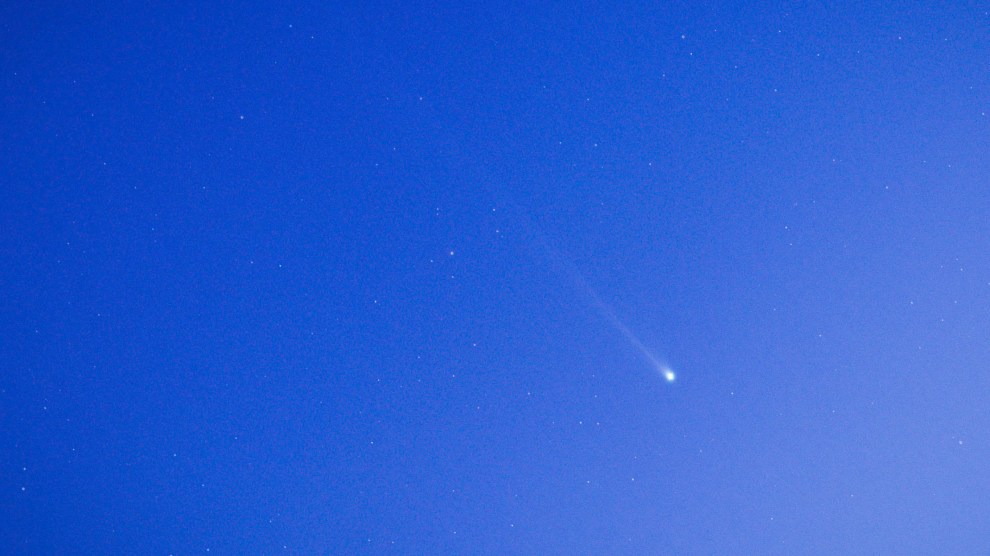
Comet Nishimura is seen in L'Aquila, Italy, on September 8. Lorenzo Di Cola/NurPhoto via AP
A once-in-a-lifetime comet has been dazzling astronomers recently, and tomorrow morning might be your last best chance to see it.
Comet Nishimura, described by the New York Times as a green-glowing “cosmic snowball” full of dust and ice, was first spotted by Japanese photographer Hideo Nishimura about a month ago, but its brightness is now at a peak, according to the Times, which reports that the comet will get harder to see after Monday morning.
Nishimura takes about 435 years to orbit the sun. While professional astronomers will enjoy it for a while longer, it won’t be visible again for ordinary sky gazers until 2458.
To make the most of this opportunity, the Times offers some handy tips: Tomorrow, about a half hour before sunrise, find a spot where you can easily view the eastern horizon without any barriers in the way. Sitting on the beach or up in the mountains is ideal, but you can also get an unimpeded view on top of certain high-rise buildings. Look for a small streak, about an inch long, low on the horizon—it should be to the lower left of Venus, a bright light above the horizon, and to the left of Regulus, a bright star in the Leo constellation. Use binoculars (or a telescope, if you have one) for an even more stunning view. Although the comet appears green in photos, CNN reports it should seem colorless or slightly pink through binoculars.
If you miss the chance tomorrow, you may in fact have more: There are differences of opinion as to the best day for spotting this comet—the Washington Post also recommends viewing through September 17, when it’s closest to the sun. Plus, for those of you who, like me, aren’t early risers and like to sleep in, you can always soak up these fantastic photos instead.
Early this morning I witnessed this glorious ☄️ – Comet Nishimura C/2023 P1 pic.twitter.com/cFBgyGrjOm
— KRL (@KennethLerose) September 10, 2023














